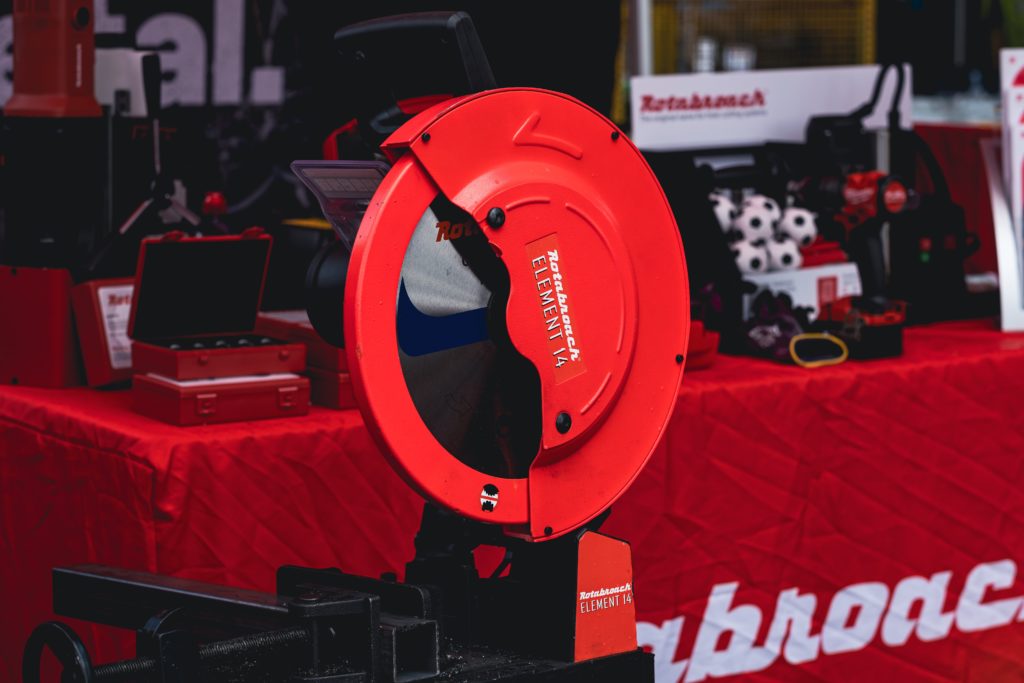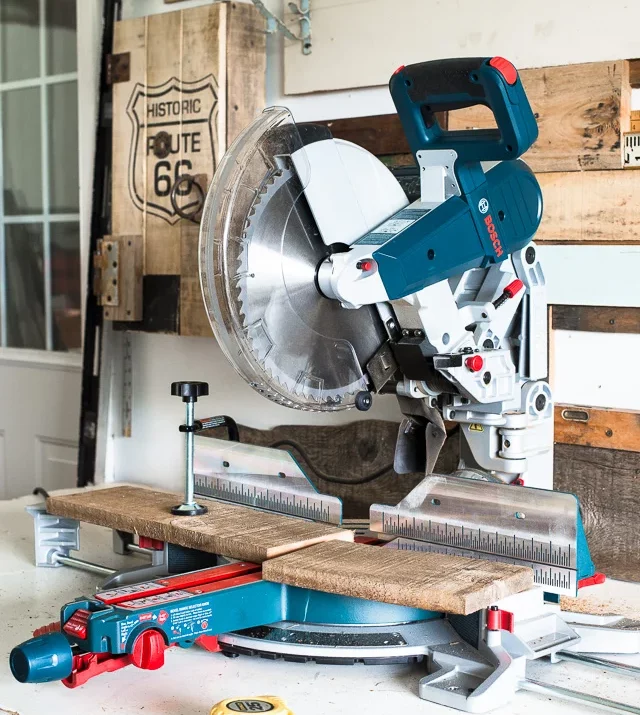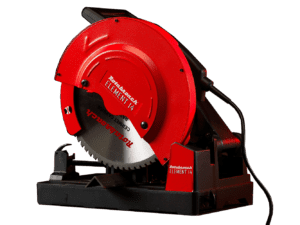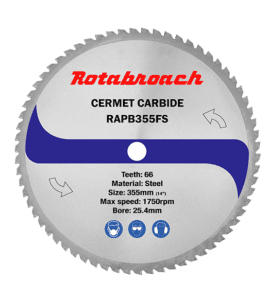Chop Saws vs Mitre Saws: A Comprehensive Guide
Mitre Saws and Chop Saws are some of the most commonly-found sawing options in workshops and sites around the world. However, despite their shared popularity, they’re used for very different purposes. In this article, we’ll take a look at some of the key differences between the two.
Chop Saw: An Overview
A chop saw, also known as a cut-off saw, is a heavy-duty power tool primarily used for straight, precise cuts in a variety of materials, particularly metal and other tough surfaces. It is characterized by its robust construction, larger blade size (typically around 14 inches), and high power, making it a preferred choice for industrial and construction settings where durability and raw cutting power are essential.
A chop saw operates by lowering a spinning blade onto a material placed on a fixed base, using a pivoting arm. This design allows the operator to cut materials quickly and with high precision, but the cuts are limited to 90-degree angles.
Safety features on chop saws usually include a blade guard to protect against flying debris and a vice or clamp to securely hold the material being cut.
Our market-leading chop saw, the Rotabroach Element 14, is designed to produce quick, clean and cool cuts in a variety of different metals. Capable of producing burr-free cuts in metal without excessive sparks, our Element 14 and range of Rotabroach saw blades don’t generate significant heat during cutting, meaning the workpiece stays cool even immediately afterwards.


A Chop saw is therefore ideal for taking on tough metals and cutting large quantities, whilst it is limited to 90° cuts this doesn’t diminish it’s value to fabrication shops and construction sites worldwide.

Mitre Saws: An Overview
A mitre saw, on the other hand, is a more versatile power tool designed to make accurate cuts at a variety of angles. It comes equipped with a blade typically ranging from 8 to 12 inches in size and a table that can pivot left and right for mitre cuts. Some mitre saws also feature a tilting head for bevel cuts or a combination of mitre and bevel cuts, known as compound cuts.
Mitre saws are popular in woodworking for trim work, framing, and molding, where angled cuts are necessary. They are also favoured for DIY projects and home renovations due to their precision and flexibility in making different types of cuts.
Similar to chop saws, mitre saws also come with safety features such as blade guards, but they usually do not feature a vice or clamp as the material is generally held against a fence during cutting.
Mitre saws are therefore not suited to heavy-duty metalworking like the chop saw, instead they are designed for woodworking and more intricate cuts.
Key Differences Between Chop Saws and Mitre Saws
-
Application and Usage
The primary difference between chop saws and mitre saws lies in their intended use. Chop saws, with their larger blades and powerful motors, are ideally suited for heavy-duty tasks and can easily cut through thicker and tougher materials, including steel. They excel in applications such as construction sites and fabrication shops, where they’re used to cut angle iron, steel plate, square tube and more.
Mitre saws, meanwhile, are preferred for precision cutting, particularly when various angles are involved. Their ability to make mitre and bevel cuts make them indispensable in fine woodworking, furniture making, and home improvement projects. However, they are typically not as robust as chop saws and are not designed for heavy-duty cutting. Therefore, whilst mitre saws are excellent for precision work, they aren’t suited to the tough demands of metalworking.
-
Versatility
One of the key strengths of the mitre saw is it’s versatility; the pivoting table and tilting head of a mitre saw allow it to make a variety of cuts, including mitre, bevel, and compound cuts, at different angles. This versatility makes a mitre saw an excellent choice for intricate woodworking projects.
In contrast, a chop saw is a specialist tool, designed for making 90-degree cuts with exceptional precision and efficiency. Although this makes it less versatile than a mitre saw, a chop saw’s raw power and robust construction make it the better option for high-volume, heavy-duty tasks that require straight cuts. This speciality makes it a common tool in manufacturing, fabrication and other areas.
-
Precision and Accuracy
While both types of saws offer a high degree of precision and accuracy, their applications differ. A mitre saw’s design makes it an excellent tool for accurate angle cuts, essential for tasks like framing, crown molding, and detailed trim work.
On the other hand, a chop saw is a high-precision tool, but it is specialized for straight, 90-degree cuts. The precision of a chop saw is vital in applications where a straight cut is essential, such as cutting pipes, frames, or beams in construction and metalworking tasks.
-
Safety Features
Both mitre saws and chop saws come equipped with safety features like blade guards to protect users from debris. However, chop saws typically also include a vice or clamp to hold the material securely in place during cutting, a feature that is not usually found in mitre saws. Instead, mitre saws rely on a fence against which the material is held during the cutting process.
Making Your Choice: Chop Saw vs. Mitre Saw
Selecting the right power tool depends on your specific needs and project requirements. If your job involves making a high volume of straight cuts in heavy-duty materials, then a chop saw’s power and durability will serve you well. Conversely, if your project requires a variety of precise, angled cuts – for instance, in cabinetry, framing, or other intricate woodworking tasks – a mitre saw will likely be your tool of choice.
However, it’s important to remember that while these power tools can offer exceptional performance, they also demand a certain level of skill and safety awareness. Always ensure you have the necessary training to operate these tools safely, wear appropriate safety gear, and follow the manufacturer’s operating instructions to mitigate any potential risks.
Both chop saws and mitre saws play vital roles in construction, woodworking, and DIY projects. Each tool offers unique advantages and capabilities – the chop saw’s strength lies in its power and durability for making straight cuts and work with tough metals, while the mitre saw offers versatility and precision for a range of angled cuts. Understanding these differences can help you choose the right tool for your specific tasks and ensure that your projects are completed efficiently, accurately, and safely.


